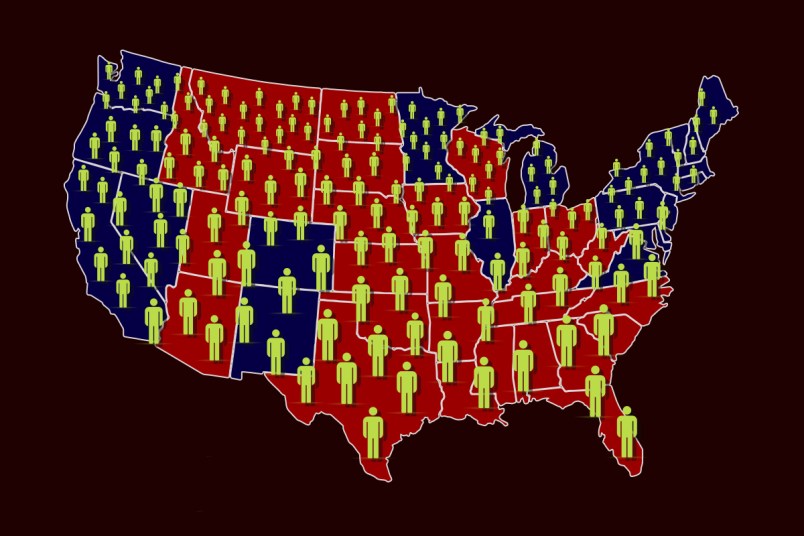Texas is the big winner in this decade’s reapportionment process, as it will gain two congressional seats from the results of the 2020 census.
Six other states — mainly in the south and west — will gain House seats, while seven states will lose congressional representation.
The shift of seven seats among 13 states was much smaller than what some prognosticators were anticipating. The survey counted 331,449,281 people living in the United States on April 1, 2020 — a growth of 7.4 percent in the last decade. That was the second slowest growth rate in U.S. history.
The state-by-state population totals in the 2020 census, and what they mean for how many House seats each state gets, were announced Monday by the Census Bureau, which cleared a major landmark in a decennial count that faced unprecedented challenges
The gains for states in the south and west come at cost to other parts of the country, where the population growth has slowed.
The states that will gain one congressional seat each are Colorado, Florida, Montana, North Carolina and Oregon.
California, Illinois, Michigan, New York, Ohio, Pennsylvania and West Virginia each lost a seat.
Monday’s announcement of the apportionment numbers comes after the Census Bureau had to drastically rework its timeline because of the pandemic. Usually the state population totals from a decennial count are announced by the end of December of that year. But the COVID-19 outbreak severely disrupted the launch of the 2020 census, which was supposed to begin in earnest on April 1. The previous administration appeared to flip-flop on whether to give the bureau that extra time, as then-President Trump announced he wanted to exclude undocumented immigrants from the apportionment count. That anti-immigrant gambit was ultimately not implemented, and Monday’s data reflects everyone residing in the United States that the survey counted.
Some estimates leading up to Monday’s announcement anticipated even bigger gains in the South, where some analysts had projected Texas gaining three seats and Florida gaining two. The underperformance of those states immediately raised questions about whether their burgeoning Hispanic populations were fully counted.
On a press call with the announcement, a bureau official said that the 2020 census counts for both states came in slightly below the estimates the agency itself had done based on birth, death and migration data.
Rhode Island staved off a loss of a seat that was expected by some, while New York’s loss of one seat was better for that state than some estimates that showed it losing two seats. New York City invested significant resources into encouraging census participation. Had 89 more people been counted in the state, and all other state populations had remained the same, it would have not lost a congressional seat.







Glad it was not worse…and people are now waking up to an accurate appraisal of what the GOP is doing…and the importance of voting.
Please let redistricting result in Qevin McCarthy, Devin “no-cow” Nunes, and Darrell Issa fighting over their two remaining districts.
Texas had been expected to pick up three seats. I guess you can keep that one, New York,
And Texas gets two. Anyone have an estimate of what +/- difference the reassignment of seats is going to make to the 2022 margin for control of the House?
It’s not only important to understand which states gain or lose a seat, but also the relative increases (or decreases) in different areas in states. Since we’ve been working with 2010 census numbers all decade, there’s been a lot of population increase in BLUE areas (cities, suburbs) and no so much in RED areas (rural, small towns). That going to make gerrymandering much harder for Rs because they no longer have the suburbs for packing and cracking effectively against the cities. Now they are the owns with their supporters clustered – so to speak – geographically at least as much and D constitutencies used to be in the cities.
It seems strange to think about it that way, but if a bunch of small population / large area rural counties with 75%+ R supporters are clustered, from where will they dilute it with just the right number of D supporters to render it a R safe district without overkill? Answer: They can’t. They needed the suburbs and now Ds are getting about 60% of suburban voters and there are now more of them.
This time around, I actually think Rs won’t be able to gerrymander effectively. They tried that and got crushed in 2018 when their 60/40 gerrymanders turned against them. Texas is a good example. With the new census, it will be large D cities that are going to earn more representation, packing or no packing.